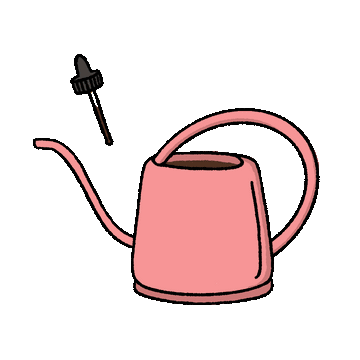Staghorn ferns (Platycerium spp) are a unique and attractive plant that can add interest and texture to any home. These epiphytic plants grow in tropical rainforests, where they attach themselves to trees or other woody plants for support, rather than growing in soil. With their distinctive antler-like fronds, staghorn ferns make great living wall decorations that will enhance the look of your home. They require minimal care but do need some special attention when it comes to watering, light exposure and temperature levels. With proper care, these beautiful plants can provide years of enjoyment.
In contrast to the wild where these plants will attach themselves to trees to grow, in a home setting, these unique and attractive plants need to be mounted on boards or moss-covered panels in order for them to survive. This is because they require high humidity levels and air circulation around their roots in order to thrive. The mounting board should be made of non-toxic materials such as cork or treated wood so it will not leach chemicals into your plant. Mounting on a board means you can easily take the plant down for watering and feeding then rehang like you would a painting.
Staghorn Ferns - A Plant Care Guide
Light
Staghorn ferns are photophilic plants that require bright but indirect light in order to thrive. The ideal light conditions for these plants involve a few hours of morning sunlight or dappled shade throughout the day. Too much direct sunlight can damage the delicate fronds, making it important to keep them out of direct sun at all times. Staghorn ferns have evolved to grow in tropical rainforests, so they need plenty of bright light and humidity levels in order to survive indoors.
Exposure to too little light will cause the plant's fronds to become longer and thinner as it tries to find more sunlight, affecting their distinct antler-like shape. Insufficient lighting also weakens the plant’s defence mechanisms against pests and diseases such as spider mites and powdery mildew.
Staghorn ferns require high levels of humidity in order to thrive. These epiphytic plants need the humidity levels found in tropical rainforests, so indoor setting should emulate this environment as much as possible. The ideal humidity level for a staghorn fern is between 50 and 70 percent. This can be achieved through regularly misting the fronds with water or keeping a humidifier near the plant, especially during dry spells.
In addition, grouping staghorn ferns together will help maintain optimal humidity levels and will also create an attractive display. Making sure that there is plenty of air circulation around the plant, such as using a fan set on low speed or placing it near an open window, will also help keep the air moving and ensure optimal humidity levels are maintained.
Potting Mix
Epiphytic plants, such as staghorn ferns, are plants that grow on another plant or object instead of in the ground. These plants don't need soil to survive and instead use an organic material such as moss or bark to get the nutrients they need from the air. This type of growth allows them to thrive in tropical rainforest environments where there is high humidity and ample indirect light but limited soil nutrients.
Staghorn ferns have evolved to take advantage of their environment by attaching themselves to trees or other woody plants for support rather than growing in soil. In this way, they are able to access moisture through condensation and air circulation which helps keep their roots hydrated. As a result, these unique plants do not need potting mix since they get all the nutrients they need from the air around them. Furthermore, mounting these ferns on boards or moss-covered panels helps keep their environment humid and provides better air circulation for better health.
Water
Staghorn ferns are fairly sensitive to water and require regular watering to remain healthy. The best way to provide moisture for these plants is by soaking them in a bucket or bowl of lukewarm water until the bubbles disappear, then allowing them to air dry before re-mounting. This helps keep their roots hydrated, while also allowing any excess water to drain away from them. It is important not to let the roots sit in water for too long as this can cause root rot. Staghorn ferns typically need to be watered once every one or two weeks, depending on the season and climate of your home. If your staghorn is too big for a bucket, we recommend taking outside and giveing a good drench with the hose (or better yet, place outside in the rain)
Fertiliser
Staghorn ferns have evolved to live in a nutrient-poor environment, and as such do not require regular fertilizing. While occasionally adding a slow-release fertilizer to the mounting board can help your plant by providing extra essential nutrients, staghorn ferns are generally able to obtain all the nutrients they need from air circulation and condensation. As long as their roots are well hydrated, they will be able to access enough nutrients for healthy growth.
Fertilizers should only be used if you notice signs of nutrient deficiency, such as yellowing fronds or stunted growth. When fertilizing your staghorn ferns, use only a very dilute solution applied directly onto the root system. This will prevent any nutrient build up that could harm your plants. Be sure to use an organic fertilizer as these contain the right balance of nutrients for optimal growth without creating an imbalance of salts in the soil that can damage delicate roots systems.
It is also important to avoid over-fertilizing your staghorn ferns as this can cause them to become prone to pests and diseases such as spider mites or powdery mildew. Fertilizing too often can also result in nitrogen burn where excessive levels of nitrates cause leaf discoloration and wilting. It's best not to feed your plant more than once every two months during active growing season or even less frequently during winter when they tend to go dormant.
Pests and Diseases
Staghorn ferns may be vulnerable to several pests and diseases when kept indoors. Common pests for staghorns include scale insects, mealybugs, spider mites, and thrips. These pests can cause problems such as leaf discoloration, wilting of leaves, and premature drop of fronds. To prevent pest infestations, keep an eye out for any signs of these pests such as webbing or white cotton-like masses on the plant. If you do spot any signs of pest activity, take immediate action by isolating the plant from other plants in your home and treating it with a suitable insecticide.
In addition to pests, staghorn ferns may also be vulnerable to fungal diseases such as powdery mildew and root rot. Powdery mildew is characterized by white powdery spots on leaves while root rot occurs when the roots are exposed to wet and humid environments for too long. If left untreated, both can cause stunted growth and wilting of fronds. To prevent these diseases from occurring it’s important to provide ample air circulation around the plant and avoid overwatering or keeping the roots in soggy soil.



1 comment
Very good reading I have tried and tried to grow the stag Horne and couldn’t but I was planting it in soil have one at the minute in soil but going to lift it and try and grow it on top of a old tree fern that died I hope this workes if u can give me any help I would be grateful olive
Leave a comment